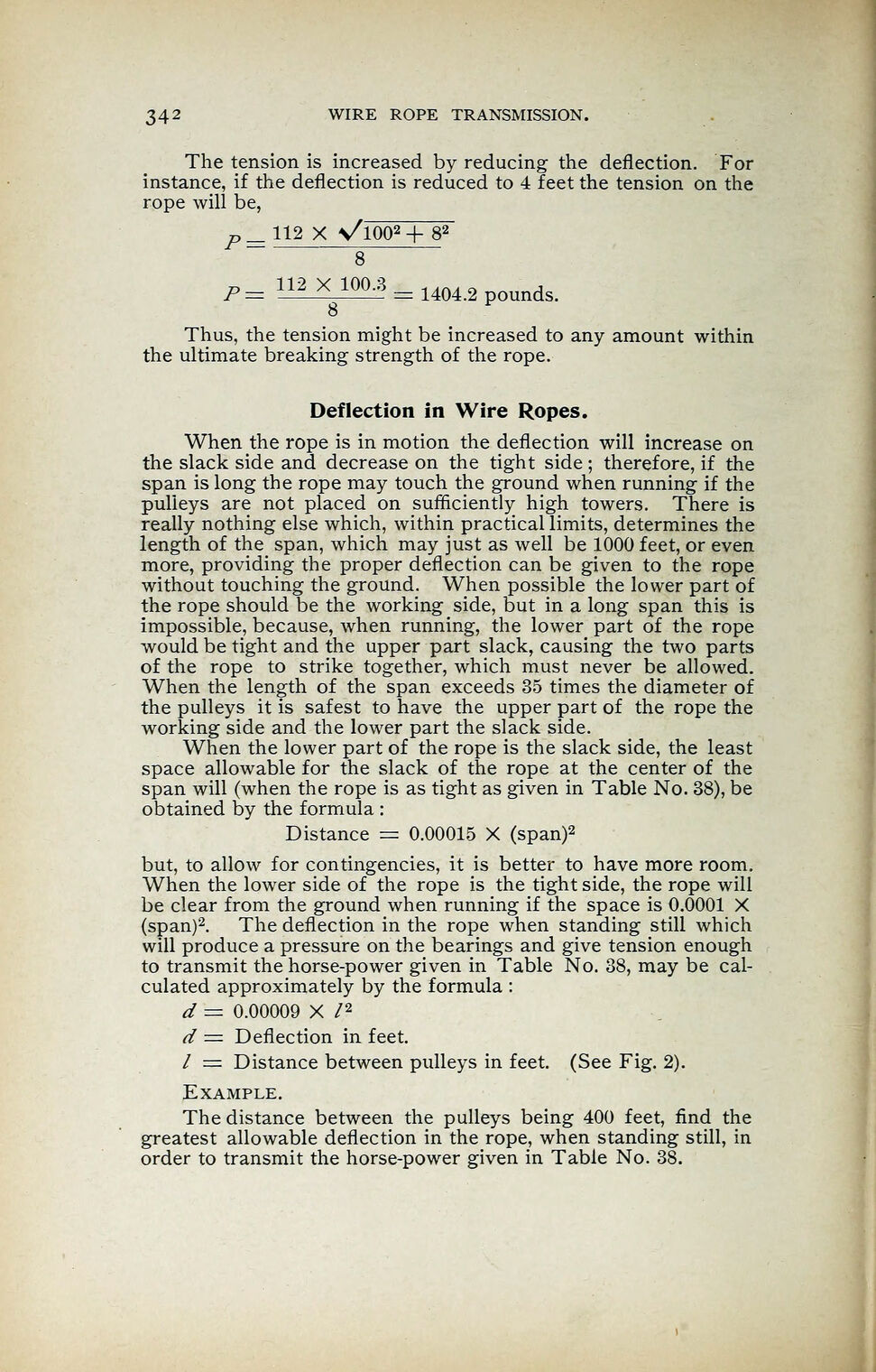
Full resolution (JPEG) - On this page / på denna sida - Rope Transmission - Transmission capacity of wire ropes - Deflection in wire ropes

<< prev. page << föreg. sida << >> nästa sida >> next page >>
Below is the raw OCR text
from the above scanned image.
Do you see an error? Proofread the page now!
Här nedan syns maskintolkade texten från faksimilbilden ovan.
Ser du något fel? Korrekturläs sidan nu!
This page has never been proofread. / Denna sida har aldrig korrekturlästs.
34 2 WIRE ROPE TRANSMISSION.
The tension is increased by reducing the deflection. For
instance, if the deflection is reduced to 4 feet the tension on the
rope will be,
p _ 112 X V^lOO2
+ 82
8
/>= 1122^3 = 1404.2 pounds.
Thus, the tension might be increased to any amount within
the ultimate breaking strength of the rope.
Deflection in Wire Ropes.
When the rope is in motion the deflection will increase on
the slack side and decrease on the tight side ; therefore, if the
span is long the rope may touch the ground when running if the
pulleys are not placed on sufficiently high towers. There is
really nothing else which, within practical limits, determines the
length of the span, which may just as well be 1000 feet, or even
more, providing the proper deflection can be given to the rope
without touching the ground. When possible the lower part of
the rope should be the working side, but in a long span this is
impossible, because, when running, the lower part of the rope
would be tight and the upper part slack, causing the two parts
of the rope to strike together, which must never be allowed.
When the length of the span exceeds 35 times the diameter of
the pulleys it is safest to have the upper part of the rope the
working side and the lower part the slack side.
When the lower part of the rope is the slack side, the least
space allowable for the slack of the rope at the center of the
span will (when the rope is as tight as given in Table No. 38), be
obtained by the formula :
Distance = 0.00015 X (span)2
but, to allow for contingencies, it is better to have more room.
When the lower side of the rope is the tight side, the rope will
be clear from the ground when running if the space is 0.0001 X
(span)2
. The deflection in the rope when standing still which
will produce a pressure on the bearings and give tension enough
to transmit the horse-power given in Table No. 38, may be cal-
culated approximately by the formula :
d — 0.00009 X / 2
d = Deflection in feet.
/ = Distance between pulleys in feet. (See Fig. 2).
Example.
The distance between the pulleys being 400 feet, find the
greatest allowable deflection in the rope, when standing still, in
order to transmit the horse-power given in Table No. 38.
<< prev. page << föreg. sida << >> nästa sida >> next page >>